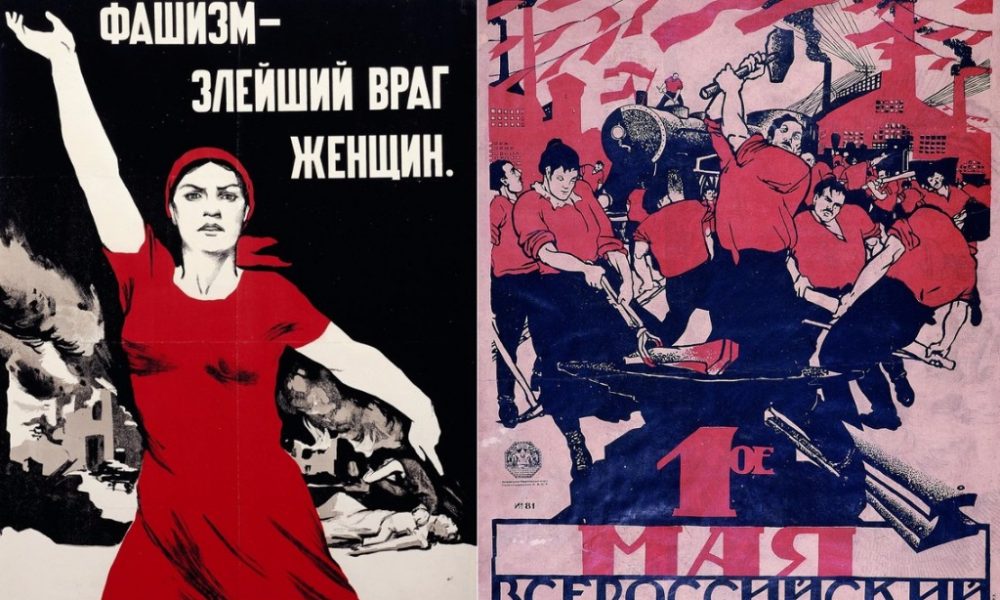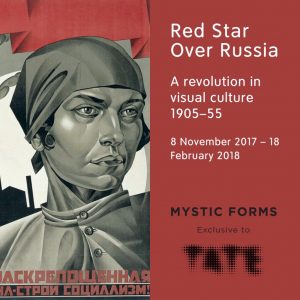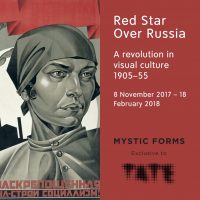Red Star over Russia: A Revolution in Visual Culture 1905-55 at Tate Modern

Red Star over Russia: A Revolution in Visual Culture 1905-55. It’s not the most gripping title, especially for an exhibition-going public who might well be a bit over Russia considering that it’s already been the subject of shows at the RA, British Library and Design Museum this year (to coincide with the centenary of the Russian Revolution of 1917). Nevertheless, Tate Modern has managed to pull it off, and this cleverly curated show is a must for those interested in the topic.
Branching out from the fine art it usually presents, Tate has dedicated this exhibition to the “visual culture” of the early USSR, from posters and propaganda to book designs, doctored photographs and police mug shots. The result is a fascinating glimpse into the story of 20th-century Russia told through visual imagery that is at times both inspiring and horrifying.
The first two rooms are dedicated to the early post-revolution years, when artists were encouraged to be experimental and radical in their practices, in an attempt to foster a new visual language for the Communist regime. Talented artists such as El Lissitzky and Aleksandr Rodchenko created posters and publications using photomontage and radical abstraction, the results of which are stunningly creative.
These artists often worked with their artistic and life partners in a collaborative way that echoed the ideals of Communism (and which is often forgotten by art history). The position of women is a subtle underlying theme of the exhibition. Women played many roles in the changing world of the USSR: from collaborative artists or conscripted soldiers, to oppressed farm workers, political enemies or the young suicidal wife of Stalin. One of the most striking images comes in the final room in the form of Nina Vatolina’s famous poster entitled Fascism – The Most Evil Enemy of Women (1941), aimed at empowering women to join the fight against the Nazis.
While many of the images on view are inspiringly creative, they jostle uneasily with the knowledge of the atrocities committed by the Communist regime, particularly during Stalin’s purges and the Great Terror of the 1930s. With the arrests of over 1.6 million people, ordinary citizens lived in a culture of fear and indoctrination, often defacing official photographs they owned in order to cut out or paint over images of those who had fallen out of favour.
The curators have struck an important balance between admiration for Russia’s creative visual culture and pathos regarding the tragedies that these images either hide or document. Concise and effective, this is a show worth seeing.
Anna Souter
Red Star over Russia: A Revolution in Visual Culture 1905-55 is at Tate Modern from 8th November 2017 until 18th February 2018. For further information or to book visit the Tate website here.
Watch the trailer for Red Star Over Russia: A Revolution in Visual Culture here:



























Facebook
Twitter
Instagram
YouTube
RSS